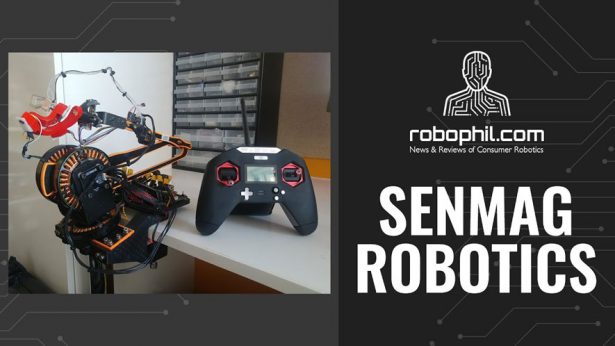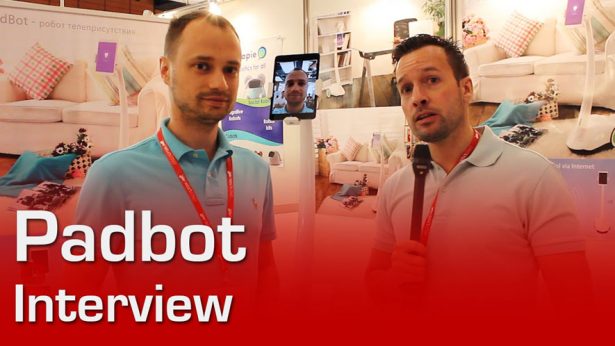Hi there, and welcome to my weekly Robot Update. This is wear I do a round up of what is going on in the Robot news around the world, so stay tuned.
Hi Guys, I’m Philip English from robophil.com, and welcome to the Robot Weekly update number 24.
Musio
WE’VE LONG KNOWN there’s a market out there for robotic buddies. One compelling piece of evidence: The original Furby sold more than 40 million units, and it didn’t really do anything.
17 years later, an A.I. and machine-learning company is making a robot pal that will do way more than its fuzzy predecessor. It’s called Musio, and it houses a pretty impressive A.I. engine developed by a company called AKA.
The robot remembers details from prior conversations, asks follow-up questions based on that info, and can be used as a smart-home controller. But its main goal is to be your friend: Asking you questions, actually listening to your answers, and learning what you’re all about.
Using add-on packs, developers can program the robot with Arduino-compatible boards, accelerometers, and Zigbee modules. There are also packs that are designed to help kids with reading, vocabulary, and conversational skills.
Musio (which, for the record, is not a mobile bot) is just one product built around the software at the heart of it, an A.I. engine called Muse.
AKA first developed Muse as an electronic English tutor, and Muse is also being used as a learning engine to drive editing software and TOEFL-prep products. The Musio robot is the first product in the company’s lineup aimed at the U.S. market, and AKA says the robot’s capabilities are going to to grow over time.
Therapeutic Robot Teddy Bear
Here’s Huggable—Teddy Ruxpin for the new millennium. It’s a talking blue teddy bot designed to care for and comfort hospitalized children.
The New York Times reported today it’s currently being used in a study that gathers kids’ physiological responses to various stress-alleviating stimuli to determine whether Huggable offers ill children therapeutic benefits or not. Eventually, that data will be integrated in the robo-bear to make it automated and able to respond to kids’ various needs.
Right now, the bear is more of a “high-tech puppet,” the Times writes. An adult down the hall controls the bear, serving as its voice, shooting the breeze with the young patient. The robot’s a collaboration between MIT’s Media Lab and Boston Children’s Hospital which has invested half a million bucks to research social robots.
As with most robots, the ultimate goal is to get it to adapt to changing situations on its own, just as humans do. So maybe one day, if a child doesn’t respond to the bear’s jokes, it could shift strategies automatically. Switching to a calmer activity might help that particular child relax, for instance.
Will robots be caring for our future offspring? If the tech’s up to stuff, maybe. After playing with Huggable, the young patient in the Times video says the bear suffered from lagged responses and limited motion—a major problem when they tried to play peek-a-boo.
Tiny ‘origami’ robot walks, swims and self-destructs
It may sound like a machine from a sci-fi film, but a tiny self-folding ‘origami’ robot that can walk and swim, before self-destructing, has been revealed.
Small enough to sit on a fingertip and weighing less than a third of gram, the device is controlled by a magnetic field and can even carry heavy loads, relative to its own size and weight.
If it becomes small enough, such a robot could one day been used in surgery to perform medical tasks from the inside of the body, before dissolving.
It is the first time a robot has been able to go through a whole ‘life cycle,’ the Institute of Electrical and Electronic Engineers (IEEE’s) magazine reported.
The device, which measures just two thirds of an inch (1.7cm) in length, was developed by a team from MIT’s Computer Science and Artificial Intelligence Laboratory and the Technische Universität München.
The researchers have been working on origami-inspired machines since 2012.
Their latest tiny robot is made from a sheets of PVC and laser-cut layers of polystyrene and paper with a magnet inside it.
Once heated, it folds into an origami shape in less than a minute.
That’s it guys, for a weekly world Robot News, I am your host Philip English
If you like this weekly report and want to see more of the latest Robot News, Reviews and robotic tutorials, then please hit the subscribe button, to keep up to date
I have put further information about the robots in the weekly robot update in the links below, as well as extra webs link for your review.
If you have a robot product that you would like me to do a review or do a tutorials for, then please ping me over a message in the comments section and I will see what I can do.
Thanks Guys! I looking forward to see you next time.
Philip English: https://philipenglish.com
Sponsor: Robot Center: http://www.robotcenter.co.uk




